I’ve been looking for a recipe for a good boozy chocolate cake for a while now. Not the ones with a ‘hint’ of brandy or vodka or rum, but one that punches you in the face like a tequila shot (while not necessarily having to be tequila), while still being delicious enough to want to finish the rest of the slice that booze-punched you in the face.
My researches brought me to a few recipes, like this incredibly boozy sounding one by Food in my Beard. This is a pretty hardcore recipe— there’s booze in the cake and then it’s soaked even more in a concoction of rum and butter. It sounded like the sort of thing that you could get drunk on.
However, I planned to use Old Monk. If you’ve ever sampled Old Monk yourself (as I suspect you might have at some point, if you live in India; even more so if you were an army kid like me), you’d know that it’s a pretty strong rum by itself (which is why it has cemented a special relationship for itself with Coke (the cola)). The balance between chocolate, sweetness and the texture of the cake itself would have to be worked out very carefully.
Shortly after I came across the Boozy Beard recipe, I came across this recipe for a flourless chocolate rum cake, at Pastry Affair. The balance of rum in this recipe seemed a little more tangible, so I decided to bake it for a friend’s birthday. The experiment was an overall success, the cake was boozy enough raise the concern amongst some patrons of the party about whether or not they’d clear a breathalyser test if they were stopped by cops on their way home.
I felt that the cake itself was a little short (in height) and that the strength of the rum had overpowered the flavour a wee bit, to a point where some people couldn’t finish a piece thanks to the overwhelming boozyness of it, so I sat down to revise the recipe this weekend. I increased the amount of eggs in the cake, to give it more volume and height. I also reduced the ratio of alcohol just a bit to balance it out better with the bitterness of the chocolate (I used 70% dark chocolate for this; you could use a semi-sweet variety you prefer your chocolate a little less bitter).
Obviously, the quality of the chocolate makes a big difference. I used Lindt’s 70% dark chocolate for this. It melts into this beautiful reddish brown shade of gloss, and always yields the smoothest results, whether it be a soufflé, mousse or cake.
The cake itself turned out beautifully dense and held its shape pretty well, forming a near perfect stout cylinder of chocolate (a general attribute of flourless cakes). The body of the cake actually shrinks away from the edges as it bakes, making it quite easy to extract from the tin. Do remember to turn the cake upside down as you’re removing it from the tin (I’ve always served my cakes the way they’ve been baked, uneven surface on top, this is the exception), as the more even bottom surface is better to spread the ganache over.
Food in my Beard’s recipe uses the butter-rum mix to make the cake extra dense, but this recipe, being flourless, is naturally dense to begin with. This is also why you need to be a little careful when you’re baking it— you need to get it to the point where it is just ready, otherwise it’ll turn into a dry, heavy block of chocolate cake (which in itself isn’t that bad, but you should aim for a degree of gooeyness, for good measure).
With regards to its drunkenness, this cake is about 8% booze, as opposed to the Pastry Affair version, which is around 11% rum. This little tweak is Old Monk specific. If you’re using white rum or some other less potent variety of dark rum, I’d advise you to use half a cup (125ml) instead of 100ml, as listed here.
This isn’t your traditional chocolate cake; it quite literally leaves a trail of warmth in your chest as it goes down. You probably shouldn’t serve it to children for fear of turning them into early alcoholics and you should warn the people you feed it to about its rum content before they shove a spadeful of it into their faces.
This is a recipe for those who appreciate the darkness of chocolate, for those who enjoy the bitterness of it with only a gentle hint of sugar. The rum amplifies the bitterness of the chocolate with its own flavour of bitter caramel, turning into a new flavour altogether, coupled with the set-molten consistency of the body of the cake itself.
The ganache (I’ve changed this entirely from the original recipe, using an edit of my own recipe for it from my chocolate salted caramel tarts), is meant to provide a gentle relief from the heady bitterness of the cake. I chilled the cake before I poured the ganache over it, since it almost sets it on contact, without melting it more and having it flow right off the edges (the way it would if the cake was fresh out of the oven). It is only sweetened with a little milk chocolate and honey. You could double the amount of rum in it (to two tablespoons) if you like living on the edge and being merciless to those you feed this cake to.
Chocolate Monk Nirvana isn’t your traditional Christmas cake, and if you’re planning to throw a non-traditional Christmas party, this cake would be a good candidate to consider for it.
The Recipe
Ingredients
For the cake
255g (70%) dark chocolate
170g butter (salted is fine)
200g powdered sugar
6 large eggs
2tsp vanilla extract
75g cocoa powder
100ml Old Monk Rum
For the ganache
100g pure cream
60g dark chocolate, chopped
25g milk chocolate, chopped
15g butter
1tbsp honey
1tbsp Old Monk Rum
Method
- In a double boiler (a glass bowl over a saucepan or vessel with about an inch of simmering water) melt the butter and chocolate with the sugar. Stir till smooth and then let cool.
- Beat in the eggs, one by one; the batter should turn glossy and become smooth. All the sugar should dissolve.
- Pre-heat the oven to 190ºC. Butter and line an 8″ circular springform tin with parchment paper. Freeze the buttered tin; this hardens the butter and seals up potential leaks.
- Add the vanilla extract and rum and mix.
- Sift in the cocoa and fold till evenly incorporated. Pour into the parchment lined tin and bake for 35-40 minutes, till a cake tester comes out more or less clean. Don’t go all the way if you like your cakes gooey.
- Cool this for about 15 minutes before inverting it onto a serving plate.
- Once the cake has cooled to room temperature, sit this in the fridge for an hour. Make the ganache in the last ten minutes of the hour.
Making the chocolate ganache
- Heat the cream in a heavy bottomed saucepan till it starts to bubble at the edges. Don’t let it burn.
- Add the chocolates and turn off the heat– mix briskly till all of it dissolves and leaves no lumps.
- Mix the butter, honey and brandy/rum in till evenly incorporated.
- Pour evenly over the chilled cake and let it set in the fridge.
- Serve at room temperature or slightly warmed, with ice cream.
The chocolate and butter in the cake tends to harden while in the fridge, so make sure you leave the cake out for an hour at least before you cut it and serve. It’ll also be a lot easier to slice, and the texture feels much lighter, the sort that melts in your mouth.
Chocolate Tip: You don’t always need to weigh chocolate. They’re usually designed in a way that each unit weighs either 5g or 10g. A Lindt bar, for example, weighs 100g, and breaks into 10 squares, which naturally would weigh 10g each. You can just divide the weight of the bar by the number of units and figure out the weight of a single piece and divide it accordingly. Most recipes call for chopping up your chocolate, but if you use a slim bar like Lindt, you can actually snap it into squares, hold two or three squares together and snap it into halves and then quarters easily, without having to use a knife.
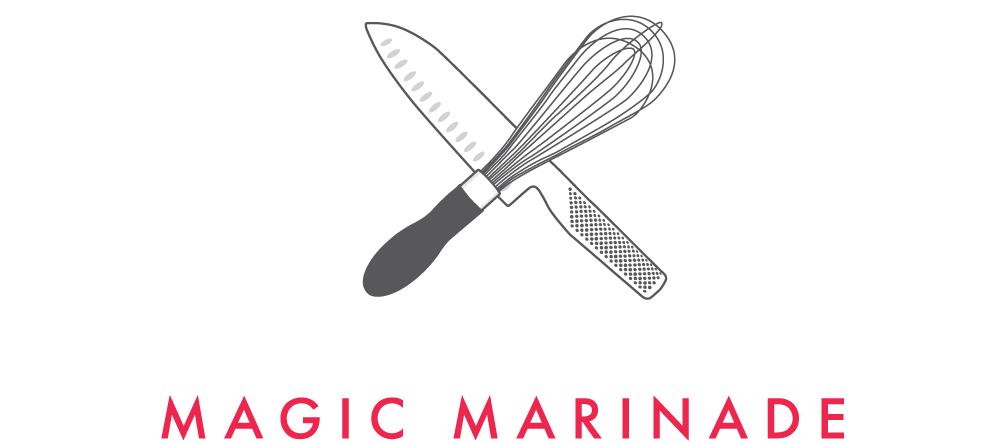
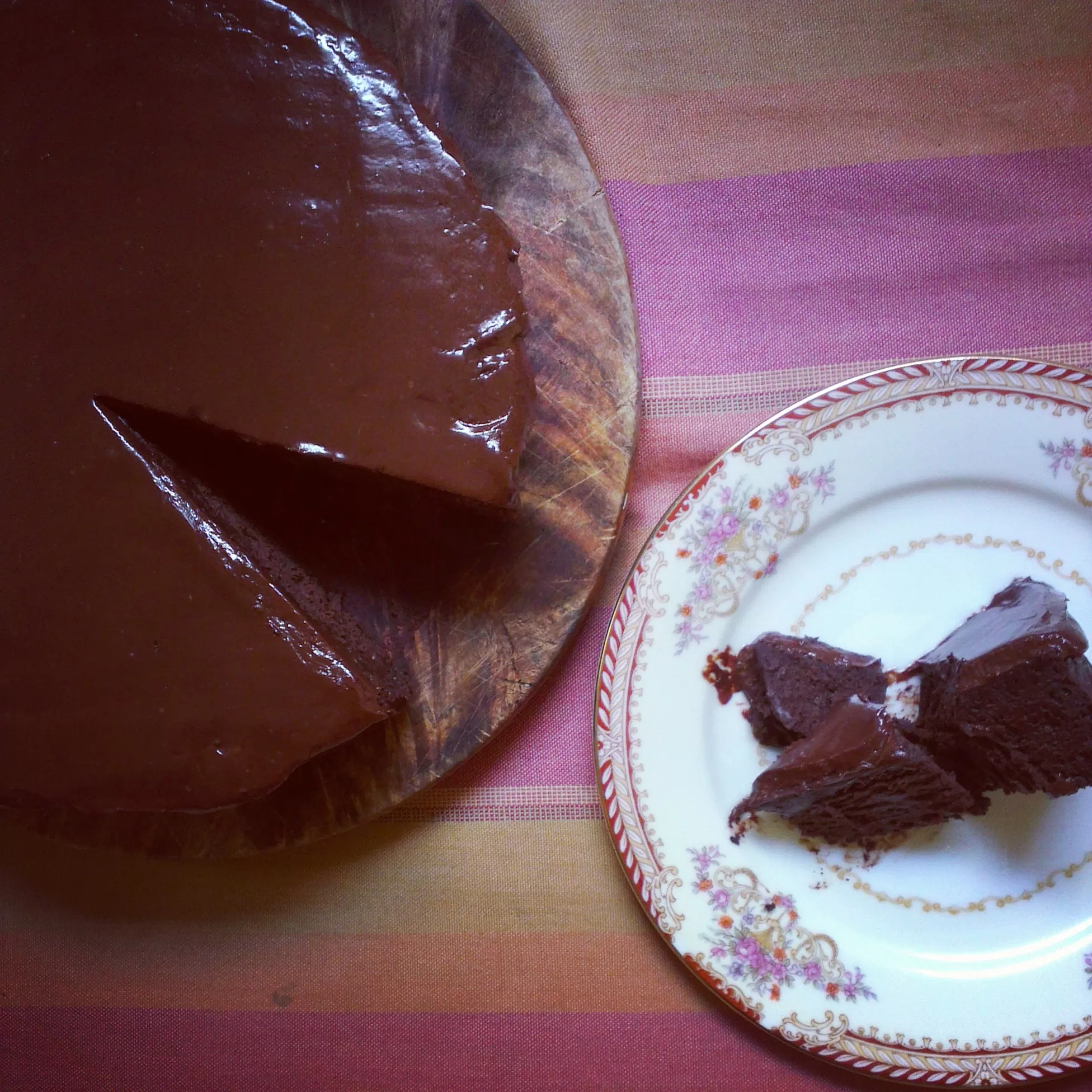
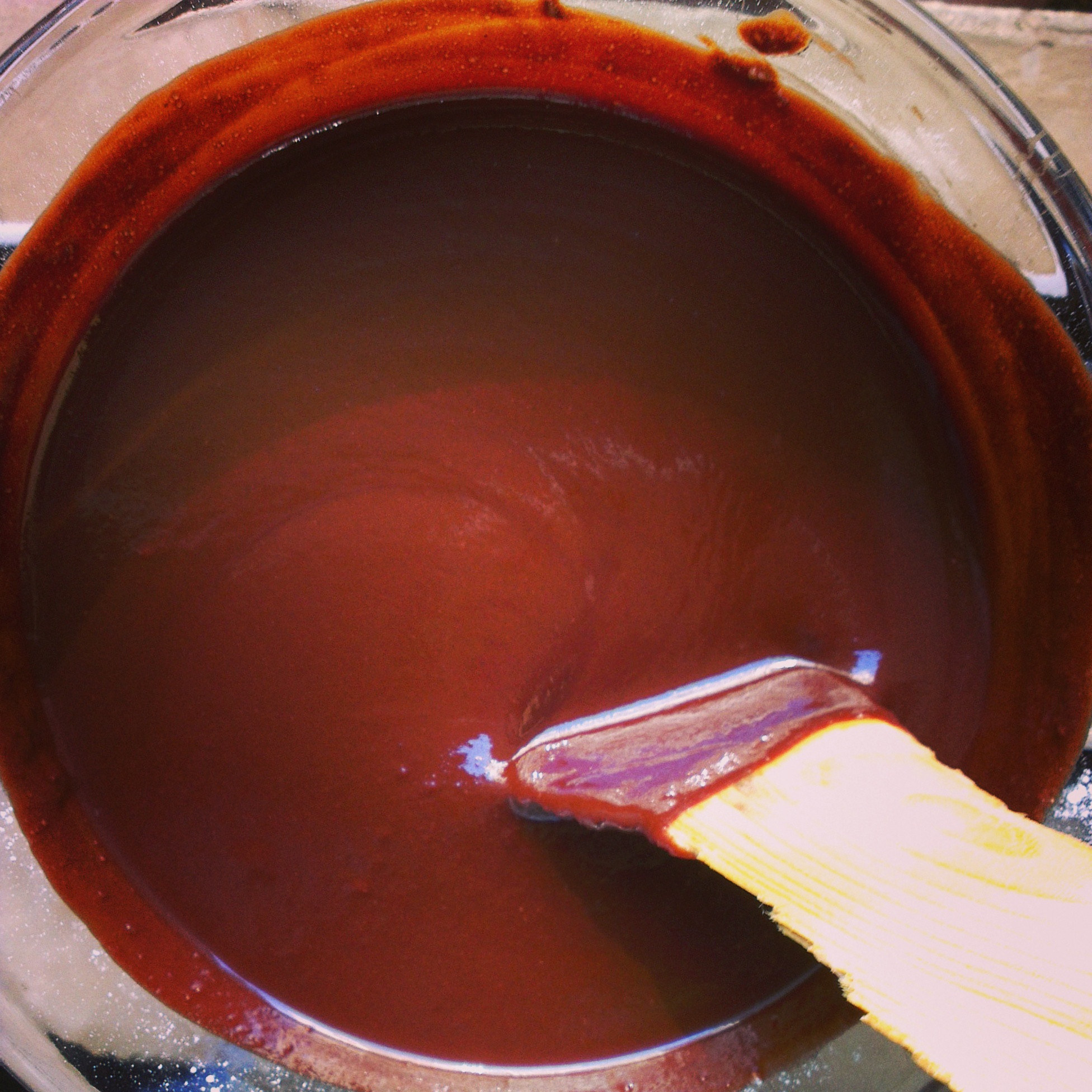
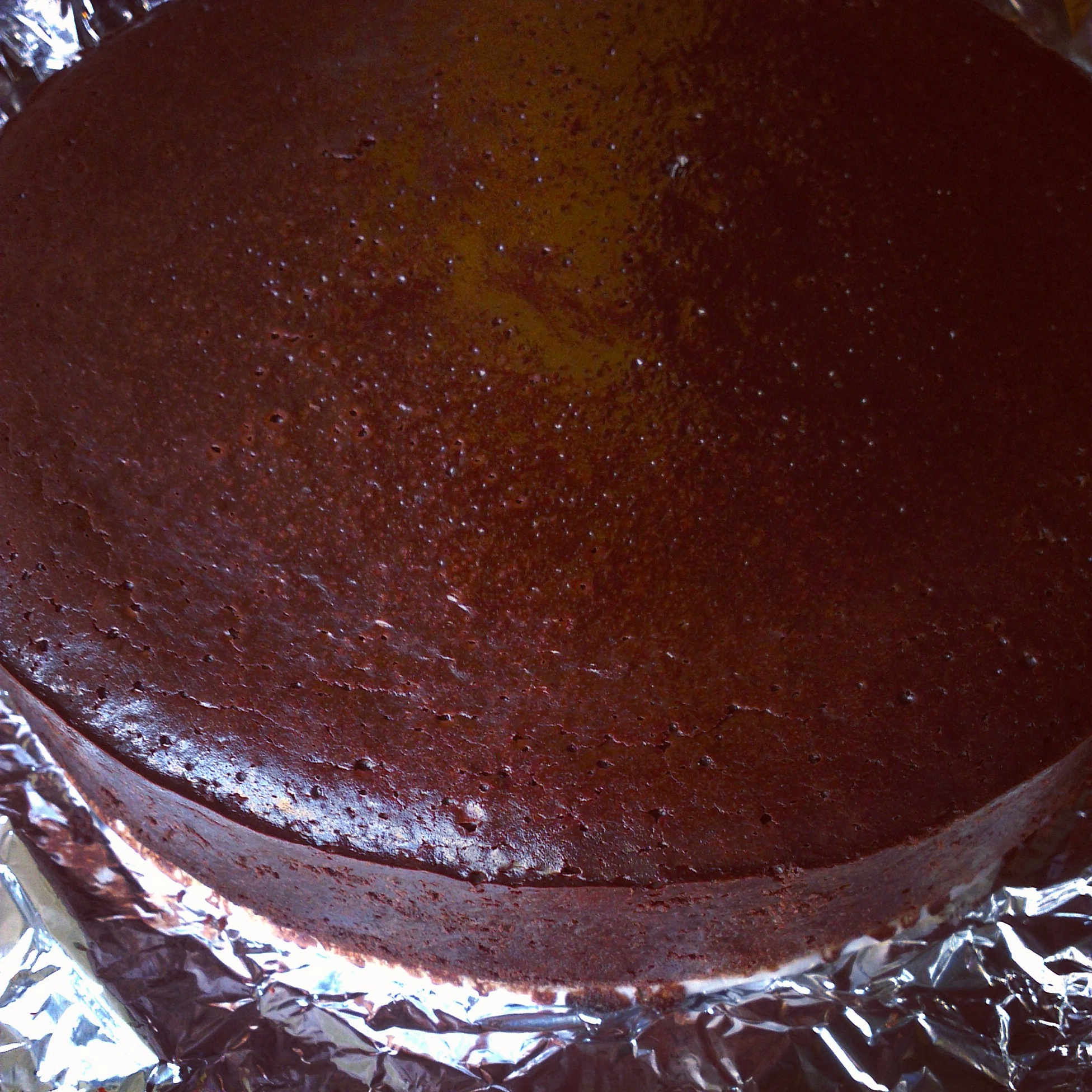
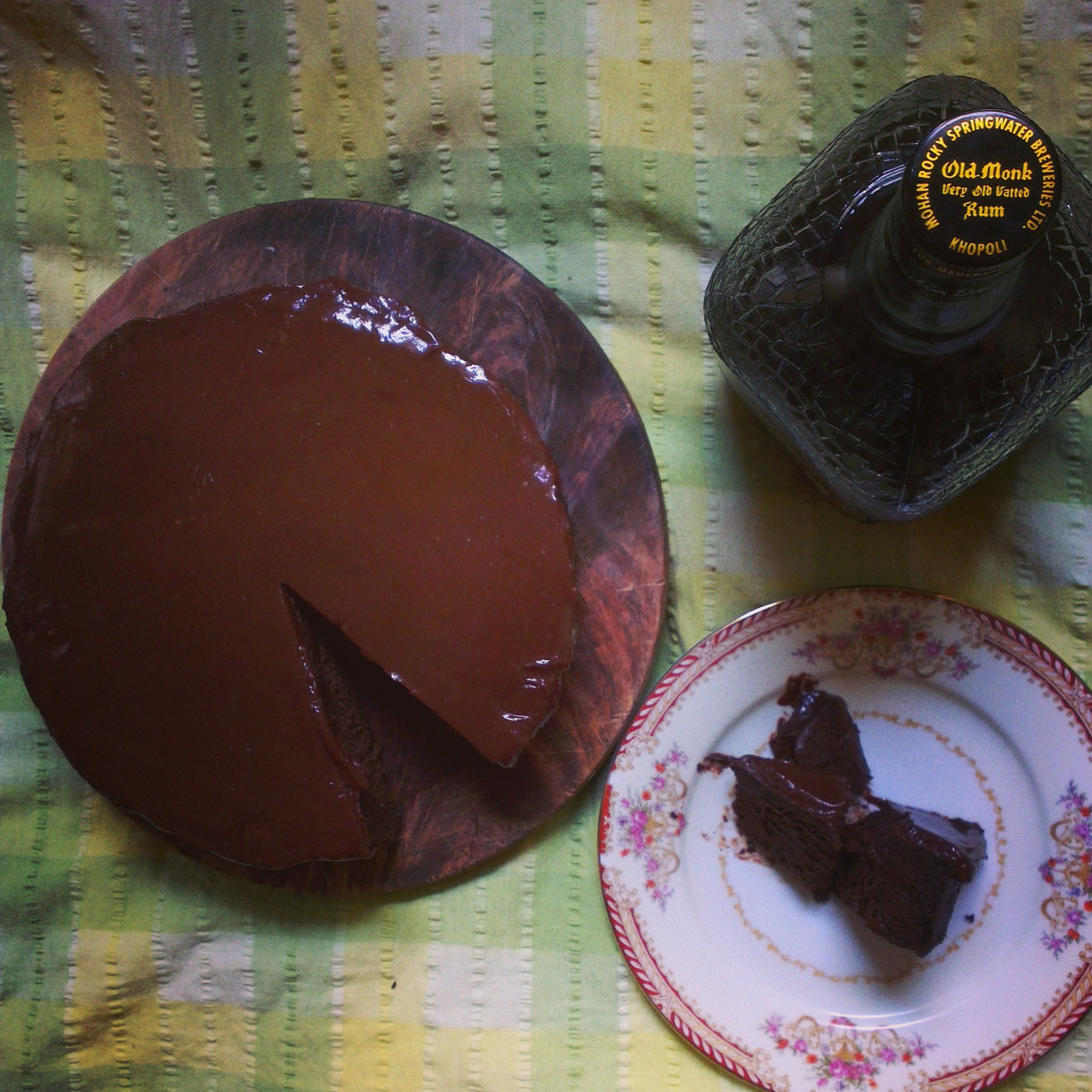
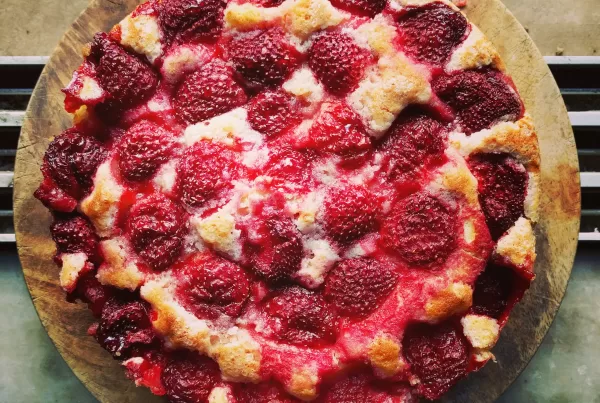
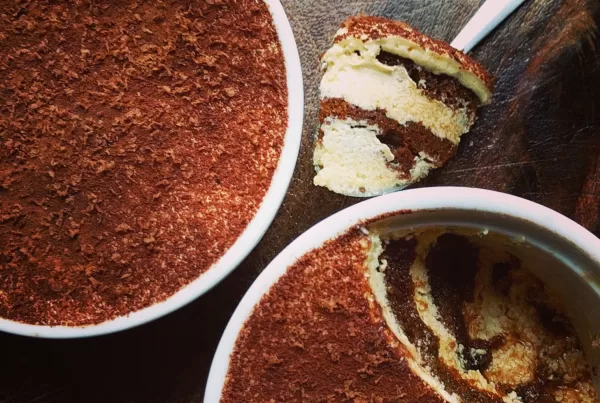
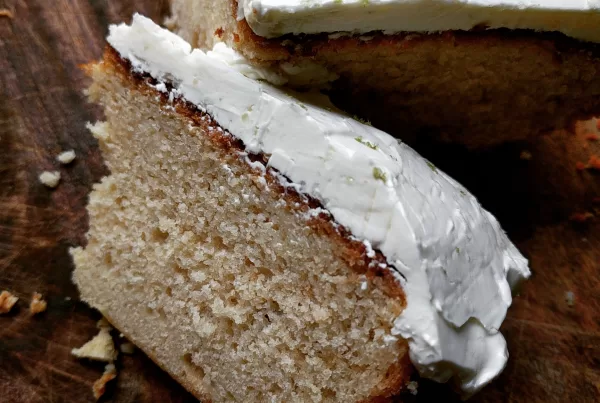


Going to make this for Christmas!
This recipe and the little bit of testing and tasting you’ve done after the first bake make it sound absolutely divine!! Being an Indian Air Force Kid myself, I’m sure my Dad and my Bro (Indian Navy) will love it’s silky decadence!
Thank you for sharing, Anand! 🙂
I’m sure they will, Ruchita. This is pretty much an Old Monk specific recipe at this point, balanced just right for the Monk’s strength 🙂
This is the best description that a cake can have! I am in awe!!
Can’t wait to bake.